Frank Edward Townsend was born on 17 April 1921, in Marion County, Ohio. His parents are Frank E. & Virtie I. (Sharp) Townsend. On 28 October 1942, he married Dorothy (Lyon).
Frank E. Townsend entered service on 6 March 1940. He attended naval training at Newport Rhode Island. Townsend served in the United States Navy during World War Two and the Korean War. During World War Two, he saw service aboard the U. S. S. Mackenzie (DD-175), U. S. S. Gregory (APD-3), U. S. S. William Ward Burrows (AP-6), U. S. S. Stevens (DD-479) and the U. S. S. Cassin Young (DD-793).
On 24 May 1940, Townsend was assigned to the U. S. S. Mackenzie (DD-175). From 25 August to 17 September 1940, Townsend saw service with the British Navy.
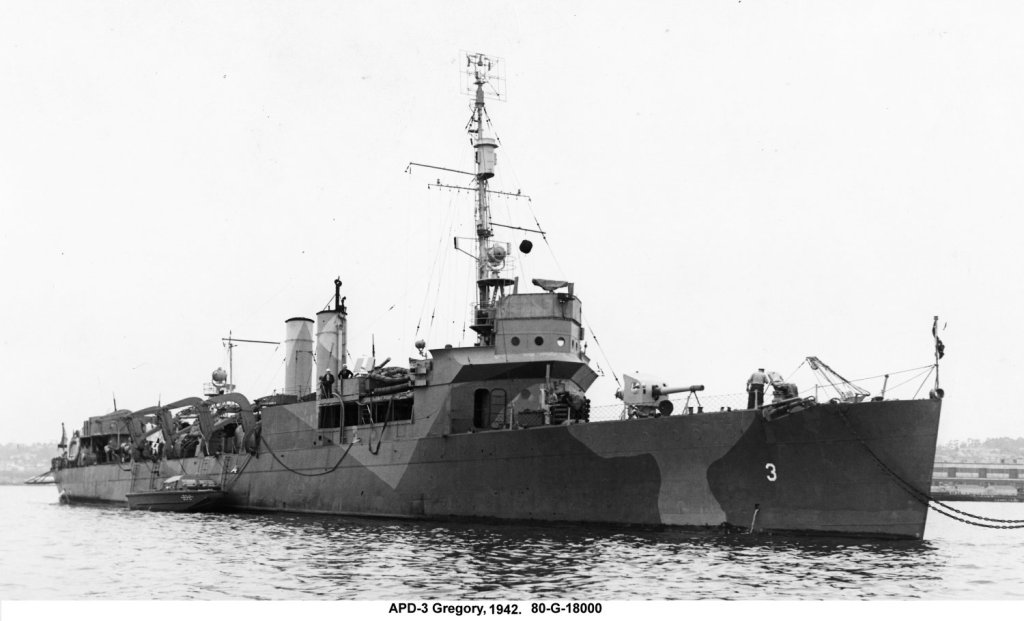
On 4 November 1940, Townsend was part of the commissioning of the converted Destroyer, U. S. S. Gregory (APD-3). While assigned to the U. S. S. Gregory, Townsend completed his training and was promoted to Machinist Mate Second Class, on 31 January 1942. The Gregory then made it’s way to Panama. Passage was made through the Panama Canal on 2 February 1942. The Gregory then arrived in San Diego, on 14 February 1942, where it underwent overhaul. Townsend and the crew of the Gregory trained the 1st Raider Battalion of Marines, off San Clementi, California. Later, the Gregory sailed to Hawaii, arriving at Pearl Harbor on 14 June 1942. After more training, the Gregory then participated in an attack of the Solomon Islands, on 7 August 1942. The Gregory was then sunk on the morning of 5 September 1942, at 01:15, while on submarine patrol. The Gregory had been attacked by three Japanese cruisers and one destroyer. The same day the surviving crew departed aboard the cargo ship William Ward Burrows (AP-6).
On 4 September USS Gregory (APD-3) and USS Little were returning to their anchorage at Tulagi after transferring a Marine Raider Battalion to Savo Island. At 0056 on the morning of 5 September, USS Gregory (APD-3) and USS Little -saw flashes of gunfire which they assumed came from a Japanese submarine until radar showed four targets-apparently a cruiser had joined the three DD’s. A Navy pilot had also seen the gunfire and, assuming it came from a Japanese submarine, dropped a string of five flares almost on top of the two APD’s. USS Gregory (APD-3) and USS Little, silhouetted against the blackness, were spotted immediately by the Japanese destroyers, Who opened fire at 0100. USS Gregory (APD-3) brought all her guns to bear but was desperately overmatched and less than 3 minutes after the fatal flares had been dropped, was dead in the water and beginning to sink. Two boilers had burst and her decks were a mass of flames.
From: Naval History and Heritage Command
At 0123, with all of USS Gregory (APD-3)’s and most of USS Little’s crew in the water, the Japanese Ships began shelling again- aiming not at the crippled ships but at their helpless-crews in the water. All but 11 of USS Gregory (APD-3)’s crew survived, 6 of them swimming through the night all the way to Guadalcanal. USS Gregory (APD-3) sank stern first some 40 minutes after the firing had begun, and was followed 2 hours later by USS Little.
Townsend then made his way back to Pearl Harbor, arriving on 28 September 1942. He then was sent to San Diego, arriving on 13 October 1942. He took leave and arrived home in Marion County, on 21 October 1942. While home he married Dorothy (Lyon), on 28 October 1942. He returned off leave 11 November 1942.

Townsend was reassigned to the U. S. S. Stevens (DD-479), on 1 December 1942. On 7 December 1942, he was able to return home again on Christmas leave. His wife, Dorothy was able to accompany him to Charleston. After training and escort cruises aboard the Stevens, they would pass through the Panama Canal and arrive in Pearl Harbor in August of 1943. On 1 September, along with 3 cruisers, 1 battleship, 3 light cruisers, 12 destroyers and one tanker, the Stevens arrived and began bombing the Marshall Islands. On 11 September 1943, they participated in the bombing of Japanese installations on Tarawa Islands. They also participated in bombings on Makin Island. The Stevens crossed the equator on the same date.
Townsend then returned to San Francisco for reassignment to the U. S. S. Cassin Young (DD-793). He then received delayed orders and was sent to Norfolk, Virginia, for engineering school at Naval Training Station, Naval Operating Base (N. O. B.). Upon completion of training, he left on 2 December 1943, for San Pedro, California. There he was back for the commissioning of the U. S. S. Cassin Young (DD-793). The Cassin Young was commissioned on 31 December 1943.
While aboard the Cassin Young, CMM Frank E. Townsend kept his own log of the ship’s operations. He logged the ship’s actions from it’s commissioning until the end of wartime service, 31 August 1945.
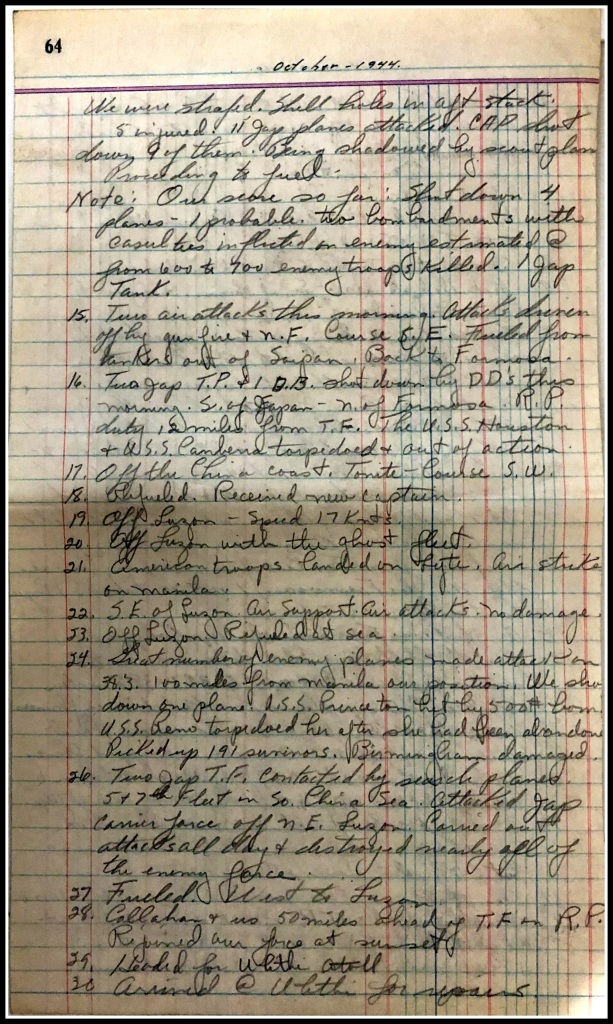
Oct. 24, 1944 “Great number of enemy planes made attack on [Task Group] 38.3 100 miles from Manila our position. We shot down one plane. U.S.S. Princeton hit by 500# bomb. U.S.S. Reno torpedoed her after she had been abandoned. Picked up 191 survivors. Birmingham damaged.”

While aboard the Cassin Young, Townsend appears to have lost two of his subordinates. They were killed in action. Townsend passed twice through the Panama Canal, crossed the equator, survived the sinking of the Gregory, survived many enemy attacks and still remembered those he served with by keeping records, photos and stories of their service together.
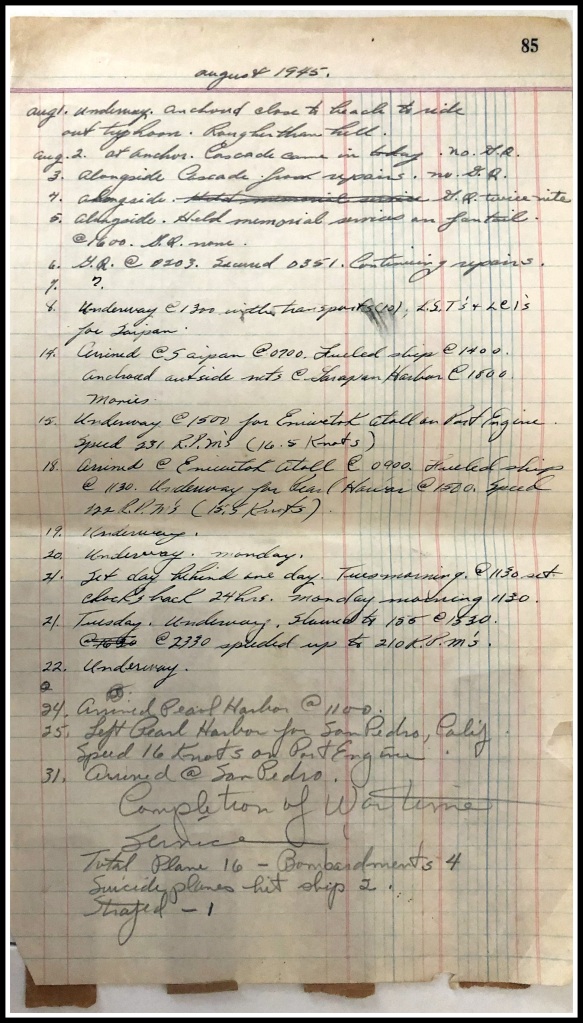
“August 21, 1945 Set day behind one day. Tues morning @1130 set clocks back 24hrs. Monday morning 1130. [Crossing the International Date-Line]
August 21, 1945 Tuesday Underway. Slowed to 155 @ 1530. @2330 speeded up to 210 R.P.M.S.
22, 1945 Underway
24, 1945 Arrived at Pearl Harbor @1100
25, 1945 Left Pearl Harbor for San Pedro, Calif. Speed 16 knots on Port Engine
31 Arrived @ San Pedro.
Completion of Wartime Service
Total Plane 16 – Bombardments 4
Suicide planes hit ship 2
Strafed – 1″
Transcribed from Townsend’s own Logs
He attained the rating of Chief Machinist’s Mate. Among his medals were the Asiatic-Pacific Area, 9 Stars; American Area; Good Conduct Medal; European-African Area; Philippine Liberation; American Defense and the Victory Medal World War Two. He was first Honorably Discharged from active service on 5 March 1946.
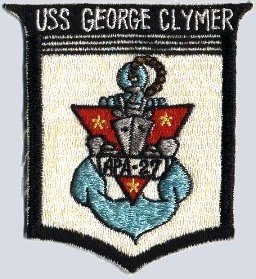
Frank E. Townsend would serve again during the Korean War. He began service on 15 July 1949. He was assigned aboard the U. S. S. George Clymer (AP-57, AP-27). The Clymer participated in the Inchon Landing from 15 – 17 September 1950. The Clymer would participate in other campaigns during the Korean War until July 1953. He was Honorably discharged again on 18 June 1953.
USS George Clymer (AP-57) returned to Inchon 8 October [1950] to embark Marines, and on 17 October she sailed for Wonsan, where she landed troops the 25th. Departing Wonsan 30 October, she steamed via Yokosuka to the United States and arrived San Diego 24 November.
From: Naval Heritage and History Command
For his service during the Korean War, MM1C Frank E. Townsend was awarded the following; Korean Service Medal, 3 Stars; United Nations Service Medal; China Service Medal; and the Navy Occupation Medal (Asiatic).
Frank E. Townsend, like many veterans, experienced the loss of many friends. But during his service, he succeeded in military training, rights of passage (passing through the Panama Canal & Crossing the Equator and the International Date-Line), he faced attack by the enemy and participated in bringing the fight to the enemy. These are just some of the experiences that molded the men that were able to return home and make our communities what they are.
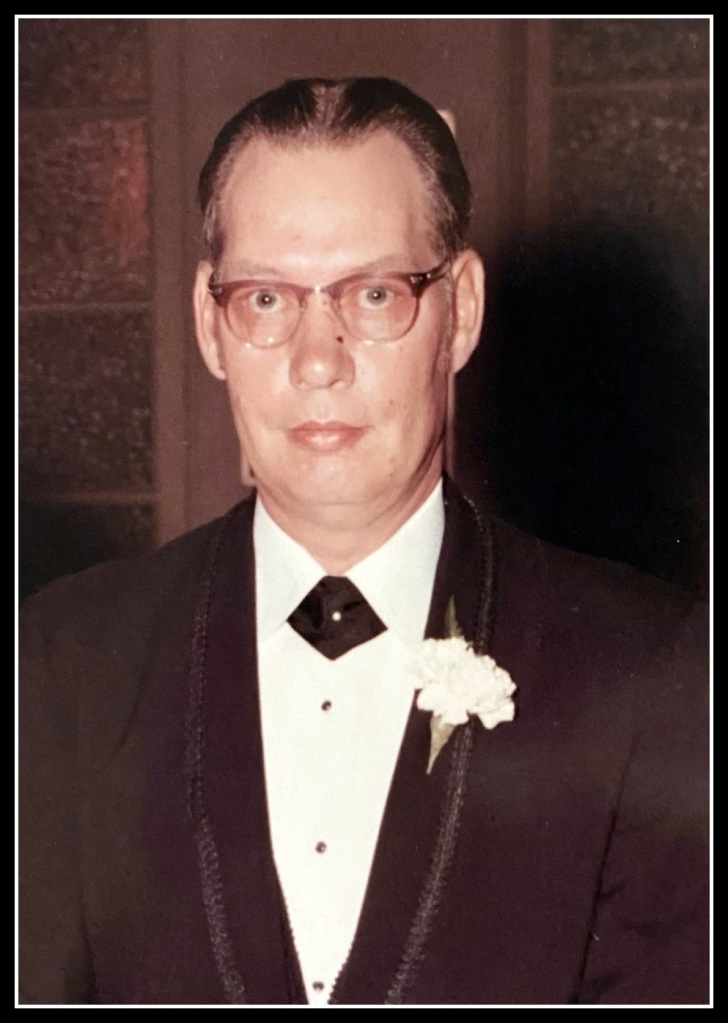
Frank E. Townsend returned to Marion and worked with the Ohio American Water Company. He raised his daughters in Green Camp, Ohio. Frank died in 1982, but is still remembered by those he knew and is remembered by his grand daughter, who shared his memories for this article.
Frank E. Townsend’s is remembered for his military service on the World War Two Memorial Wall at the Marion Cemetery
Video about the Engineering and Propulsion of the USS Cassin Young: